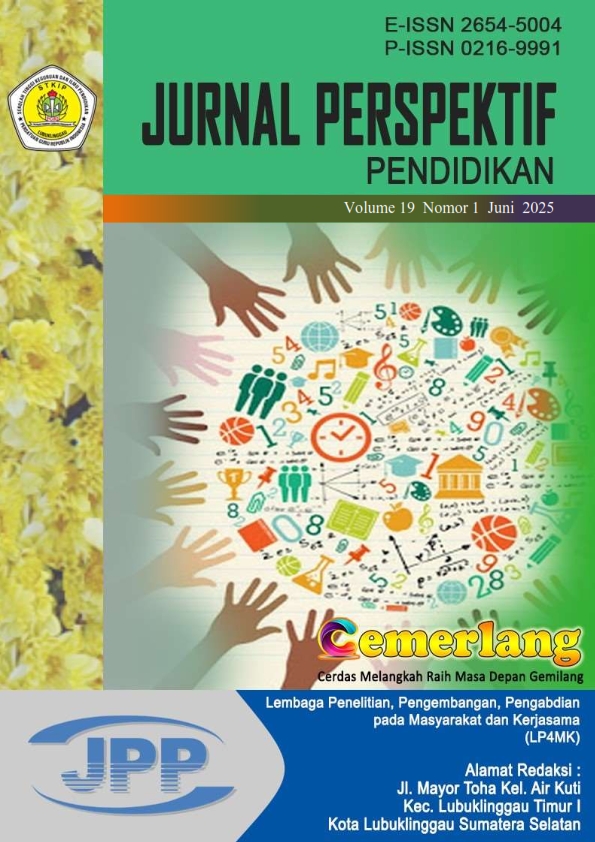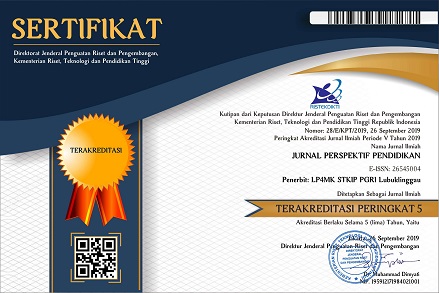Students’ Perception on the Use of Note-taking Strategy in Listening
Students’ Perception on the Use of Note-taking Strategy in Listening
Abstract
Note-taking strategies are essential for students to understand the meaning of the conversations or audio files they hear. Therefore, the researchers conducted this study to find out how students perceive the use of note-taking strategies in listening process. This study was based on qualitative research. 24 students from an English Education department were selected to participate in this study. This study used questionnaires as a data collection technique. After data collection, the researchers conducted a descriptive analysis of the data following the process of reading or remembering, describing, and classifying. The results of this study indicate that students have a good awareness of using note-taking strategies in listening classroom. The students used note-taking strategies while listening to understand and remember each point of the information that was hear. It acts as a tool for developing working memory, focusing attention, and identifying important ideas within the information presented. The act of writing down information strengthens memory and helps students recall key details later. Students were focused on main points, paraphrase some ideas in their own words, and use symbols/color-coding to highlight important information in listening subject. Furthermore, using note-taking strategies in listening comprehension has many benefits, such as helping students retain information better, grasp key points, paraphrasing information, organizing notes with headings and lists, review previously learned material, and can improve students’ motivation, and increase students’ listening comprehension. As it is known that note taking can be a good strategy in learning due to its function and advantages in listening classroom.
References
Berry, G. C., Deshler, D. D., & Schumaker, J. B. (2011). The Listening and Note-Taking Strategy. University Press of Kansas.
Boch, F., & Piolat, A. (2005). Note Taking and Learning: A Summary of Research. The Wac Journal, 16(1), 101-113. https://doi.org/10.37514/wac-j.2005.16.1.08
Carrell, P. L., Dunkel, P. A., & Mollaun, P. (2002). The Effects of Note Taking, Lecture Length and Topic on the Listening Component of TOEFL 2000. Princeton, NJ: Educational Testing Service.
Dunkel, P. (1988). The content of Ll and L2 students’ lecture notes and its relation to test performance. TESOL Quarterly, 22(2), 259-281. https://doi.org/10.2307/3586936
Dunkel, P., & Davey, S. (1989). The Heuristic of Lecture Notetaking: Perceptions of American and International Student Regarding the Value and Practice of Notetaking. English For Specific Purposes, 8(1),33-50.
Episiasi, E., Mujiyanto, J., Suwandi, & Hartono, R. (2023). Exploring the Effects of Metacognitive Strategy on EFL Students’ Listening Performance in Indonesia. New Educational Review, 72(2023), 176–187. https://doi.org/10.15804/tner.23.72.2.13
Gilakjani, A. P., & Ahmadi, M. R. (2011). A Study of Factors Affecting EFL Learners’ English Listening Comprehension and the Strategies for Improvement. Journal of Language Teaching and Research, 2(5), 977–988. https://doi.org/10.4304/jltr.2.5.977-988
Gur, T., Dilci, T., Coskun, İ., & Delican, B. (2013). The Impact of Note-taking while Listening on Listening Comprehension in a Higher Education Context. International Journal of Academic Research, 5(1), 93–97. https://doi.org/10.7813/2075-4124.2013/5-1/b.16
Jaya, H.P., Petrus, I., & Kurniawan, D. (2021). Listening Comprehension Performance and Problems : A Survey on Undergraduate Students Majoring in English. IRJE/Indonesia Research Journal in Education, 5(2),375-386. https://doi.org/10.22437/irje.v5i2.14428
Kiewra, K.A., Benton, S.L., Kim, S., Risch, N., & Christensen, M. (1995). Effects of Note-taking Format and Study Technique on Recall and Relational Performance. Contemporary Educational Psychology, 20(2), 172-187. https://doi.org/10.1006/ceps.1995.1011
Kılıckaya, F., Cokal-Karadas, D. (2009). The Effect of Note-taking on University Students’ Listening Comprehension of Lectures. Kastamonu Education Journal, 17(1), 47–56.
Nunan D. (2003). Listening in second language. The language teacher, retrieved February 2, 2010, from http://www.jaltpublication.org/old_tlt/article/2003/07/nunan
Permana, Y.S., & Cunandar, D. (2025). Guided Note-Taking Strategy in Strengthening Students’ Listening Skills. Journal of English Language Pedagogy, Literatur, and Culture, 10(1), 86–96. https://doi.org/10.35974/acuity.v10i1.3777
Piolat, A. 2004. Cognitive Effort During Note Taking. Applied Cognitive Psychology, 19(3), 291-312. https://doi.org/10.1002/acp.1086
Richard, J. C. and Schmidt, R. (2002). Longman Dictionary of Language Teaching and Applied Linguistic (3th Ed.). London: Pearson Education Limited.
Rost M. (2002). Teaching and Researching Listening. London, UK: Longman.
Selvi, S., Akib, E., & Muhsin, M. A. (2024). Improving Students’ Listening Skills through Note-taking Exercise Strategies in SMK Muhammadiyah 2 Bontoala. EduLine: Journal of Education and Learning Innovation, 4(3), 310-317. https://doi.org/10.35877/454RI.eduline2962
Siegel, J. (2022). Factors Affecting Note-taking Performance. International Journal of Listening,38(2), 118–130. https://doi.org/10.1080/10904018.2022.2059484
Soumokil, J. C., Nikijuluw, R. C. G. V., & Lekatompessy, F. M. (2021). Students’ Perception toward the Use of Note-Taking Strategy in Listening Class. Huele: Journal of Applied Linguistics, Literature and Culture, 1(1), 17-32. https://doi.org/10.30598/huele.v1.i1.p17-32
Siswahyuni, A., Melvina, M., & Sesmiyanti, S. (2023). Students’ Perception of Using Note-taking in Liistening. English Teaching and Linguistics Journal (ETLiJ), 1(2), 147-153. https://doi.org/10.30596/etlij.v4i2.16460
Sulistyo, B., Anggeraini, Y., Nurhasanah, N., Yusnilita, N., Awalludin, A., & Episiasi, E. (2023). Students’ Motivation on the Use of Technology and Its Relationship with their Receptive Skills. Jurnal Pendidikan Progresif, 13(3), 1162–1173. https://doi.org/10.23960/jpp.v13.i3.2023

This work is licensed under a Creative Commons Attribution-NonCommercial-ShareAlike 4.0 International License.

Jurnal Perspektif Pendidikan by https://www.ojs.stkippgri-lubuklinggau.ac.id/index.php/JPP is licensed under a Creative Commons Attribution-NonCommercial-ShareAlike 4.0 International License.















